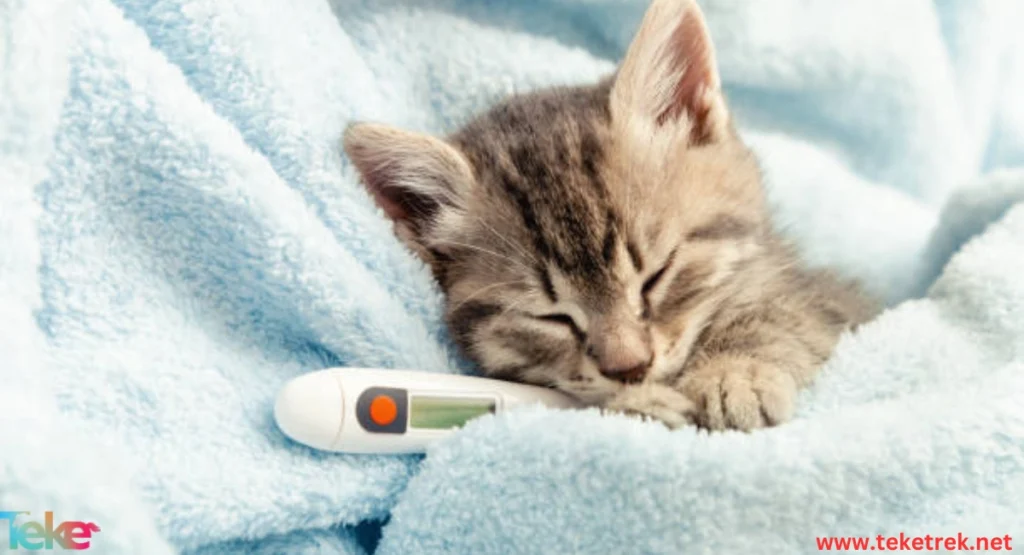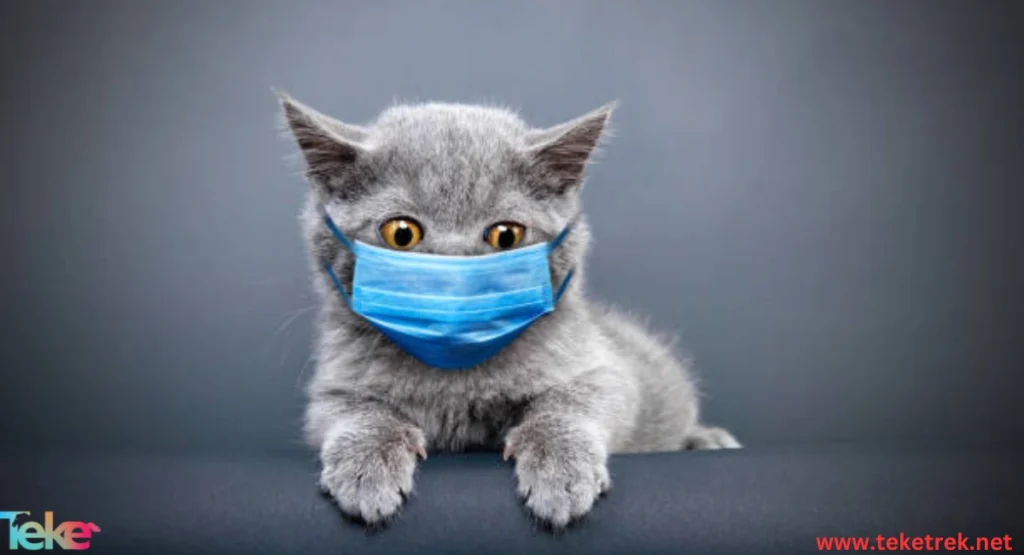تعد القطط من الحيوانات الأليفة التي يحب الإنسان تربيتها، وقد تصاب القطط بالعديد من الأمراض ومن أشهرها انفلونزا القطط والتي تصيب الجهاز التنفسي عند القطط وتعد خطيرة إذا لم يتم التشخيص المبكر وصرف العلاج اللازم له وبعدها تقل الأعراض تدريجياً ويتم الشفاء من الفيروس، وهذا المرض لا يعد خطيراً على القطط السليمة والتي لا تعاني من ضعف المناعة، ويشكل خطراً إذا كانت مناعة القطة ضعيفة أو عمرها مسن.
ويمكن ملاحظة إنفلونزا القطط من خلال ظهور بعض الأعراض مثل سيلان الأنف والسعال وارتفاع درجة الحرارة والخمول، وغيرها من الأعراض الأخرى، وهناك عدة أسباب تكون عامل أساسي في الإصابة بأنفلونزا القطط مثل الفيروسات المختلفة، وأنواع من البكتيريا، وإليك دليل شامل من teketrek، الأعراض والعلاج والوقاية من انفلونزا القطط.
تعريف بإنفلونزا القطط وأسبابها
إنفلونزا القطط أو ما يعرف بزكام القطط هو مرض فيروسي يصيب الجهاز التنفسي العلوي للقطط ويسبب ظهور عدة أعراض مثل الحمى، والسعال، وسيلان الأنف، التهاب العينين، والحلق، ويكون سبب هذا المرض هو الفيروسات والبكتيريا المحيطة بالقطة، وهناك عدة أسباب لإنفلونزا القطط وهي كالتالي:
فيروس الهربس الثانوي
ويعد من أكثر الأسباب شيوعاً لإنفلونزا القطط وينتقل هذا الفيروس من خلال اللعاب وإفرازات الأنف، أو العين ويمكن الانتقال من نقطة إلى أخرى بسهولة وتظهر أعراضه في الحمى والعطس، وتقرحات في العين وفي اللسان وفقدان الشهية ويفكر هذا الفيروس خطر كبير على القطه الحامل ويؤدي إلى الى موت الجنين تصاب القطط بالزكام بسبب هذا الفيروس بنسبة 80%.
ينتقل هذا الفيروس من نقطة إلى أخرى عن طريق الاتصال المباشر به أو عن طريق انتشار الفيروس في الهواء، وتظهر أعراض هذا الفيروس في الحمى وإفرازات من العين والأنف وسيلان اللعاب وفقدان الشهية الشديد ووجود تقرحات في الفم، كما يظهر الالتهاب الرئوي إذا كان الفيروس شديدًا، ويشكل هذا الفيروس خطورة كبيرة، حيث يمكن للقطط بعد تعافيها أن تصبح حاملة للعدوى وتنقلها إلى قطط أخرى، على الرغم من عدم ظهور الأعراض عليها مرة أخرى، والقطط الملقحة لا تظهر عليها أعراض الفيروس ولكنها حاملة للفيروس ويمكنها نقله.

الكلاميديا
هذا نوع من البكتيريا، ونادرًا ما تصاب القطط بنزلات البرد بسبب هذه البكتيريا، ومن الأعراض التي تسببها هذه البكتيريا إفرازات شديدة من الأنف والعينين مع احمرار في العينين، لكن هذا النوع من البكتيريا لا يشكل عادة خطرًا كبيرًا مثل الفيروسات الأخرى.
بورديتيلا
هذا نوع من البكتيريا يشبه الكلاميديا في الأعراض، لكنه قد يكون أكثر تقدمًا منه، حيث يسبب تلفًا في صدر القطة والجهاز التنفسي، وقد تتسبب هذه البكتيريا في موت القطط.
كيفية انتقال الإنفلونزا بين القطط
عند إصابة القطة بالفيروس فإن جزيئات الفيروس تنتقل بسرعة في المكان من خلال إفرازات الأنف والعين، ومن خلال اللعاب، وعندما تتعرض أي قطة أخرى لهذه الحزيئات الفيروسية فإن المرض ينتقل إليها بسرعة، كما أن هناك اعراض تظهر عليها.
الأعراض والعلامات التحذيرية لإنفلونزا القطط
يوجد عدة أعراض تظهر على القطة والتي توحي بإصابتها بأنفلونزا القطط، ويجب الانتباه لهذه الأعراض جيداً حتى يتم التشخيص المبكر لها وإنقاذها قبل فوات الأوان وتظهر هذه الأعراض بعد أسبوعين من إصابة القط بالفيروس ومن بين هذه الأعراض ما يلي :
سيلان الأنف.
التهاب الحلق.
تقرحات العين.
العطس.
فقدان الصوت.
وجود صعوبة في التنفس.
الحمى.
خمول القطة.
هناك عدة مضاعفات تظهر على القطط مثل السيلان الدائم للأنف بسبب التهاب بطانة الأنف وعادة ما تظهر هذه المضاعفات عند اصابة القطط بفيروس لأن القطة سوف تحمله في جسدها مدى الحياة حتى وإن اختفت الأعراض.
كيفية تشخيص إنفلونزا القطط
عند ملاحظة أي عرض من الأعراض التي قمنا بذكرها في الأعلى يجب زيارة الطبيب البيطري على الفور، وعندها سيكون الطبيب بعدة اختبارات لمعرفة سبب ظهور هذه الأعراض وسوف يقوم بعمل مسحه للقطة، وإرسالها للمختبر لمعرفة نوع سلالة الفيروس الذي تسبب في الزكام للقطة بعدها سوف يقوم بوصف العلاج المناسب للقطط.
أفضل طرق العلاج والتعامل مع القطط المصابة
في حالة إثبات وجود إصابة القطط بانفلونزا سوف يقوم الطبيب بوصف العلاج للتخفيف من الأعراض، ومن بين هذه العلاجات ما يلي:
مضادات الالتهاب والتي تخفف من الأعراض الظاهرة
المضادات الحيوية في حالة إذا كانت أعراض الزكام شديدة على القطط.
مزلقات وقطرات العين من أجل تجنب حدوث تقرحات للعين، والتي من الممكن أن تتسبب في فقدان البصر.
في حالة كانت القطة فاقدة للشهية كثيراً وغير قادرة على تناول الطعام يفضل أن يتم حجزها، وعلاجها في المستشفى.

طرق الوقاية والتطعيم ضد إنفلونزا القطط
قد يكون من الصعب الوقاية من الإصابة بأنفلونزا القطط لأنه ينتقل بسرعة من القطط المصابة إلى باقي القطط من خلال الرشح أو انتقال القطة في مكان ينتشر فيه الفيروس أو البكتيريا المسببة الانفلونزا، ولكن قد يتم اتخاذ الحذر، والحيطة من خلال عدم اختلاط القطة بقطط أخرى جديدة إلا بعد مرور أسبوعين على الأقل فإذا لم يوجد أعراض ظاهرة على القطة الجديدة عندها يمكنك خلط قطتك بها لأن هناك قطط حاملة للفيروس ولا تظهر أعراضه إلا بعد أسبوعين.
لابد من إطعام القطة اللقاحات المطلوبة ضد فيروس الهربس السنوري، وفيروس الكاليسي، لأن هذان النوعان من أخطر أنواع الفيروسات المسببة للأنفلونزا وعند تعرض القطة لأحدهما فإنهما يبقيان في جسد القطة طوال العمر.
الخاتمة
إنفلونزا القطط تعد من الأمراض الخطيرة التي تصيب القطط إذا لم يتم تشخيصها وعلاجها بسرعة لأن هذا المرض سريع الانتشار بين القطط وقد يتسبب في موت الكثير من القطط، لذا يجب عليك ملاحظة الأعراض التي ذكرناها ومنع اختلاط القطة بقطط أخرى حتى لا تنقل الفيروس للآخرين، ولا تقلق فإن انفلونزا القطط لا تنتقل إلى البشر، ويجب زيارة الطبيب عند ظهور أي عرض على القطة.





